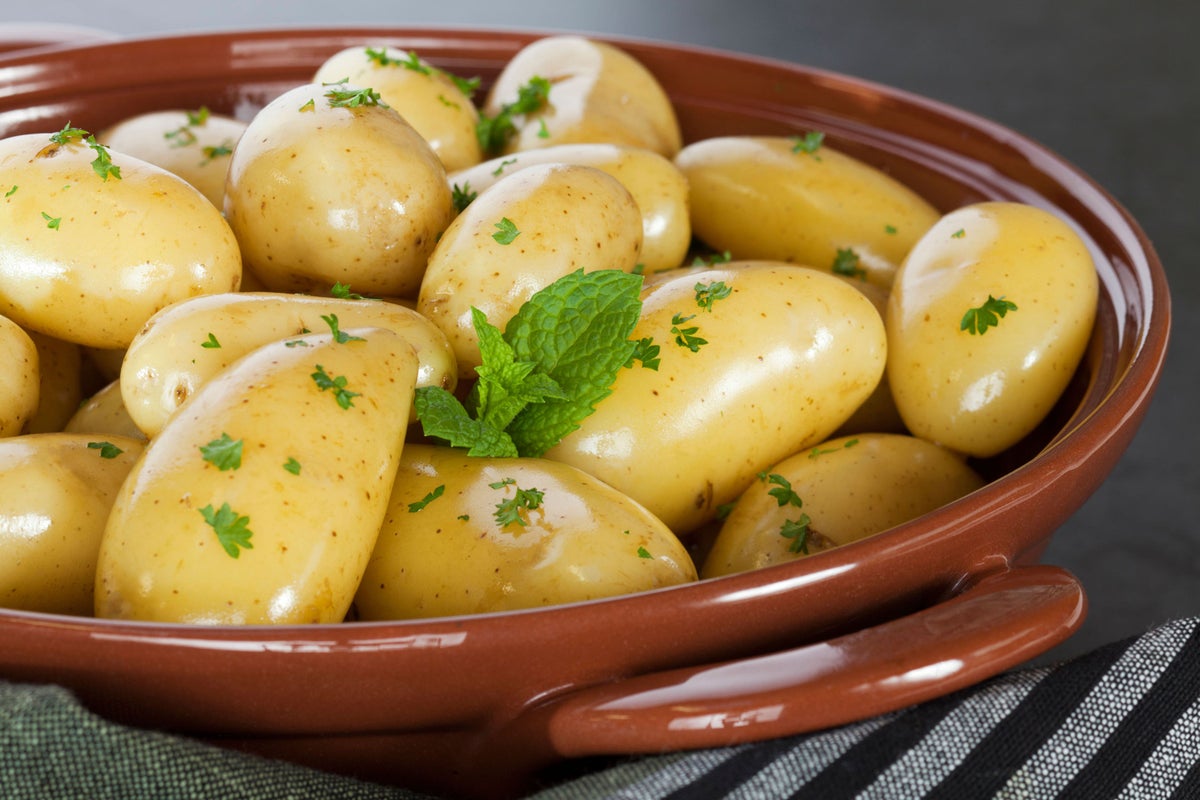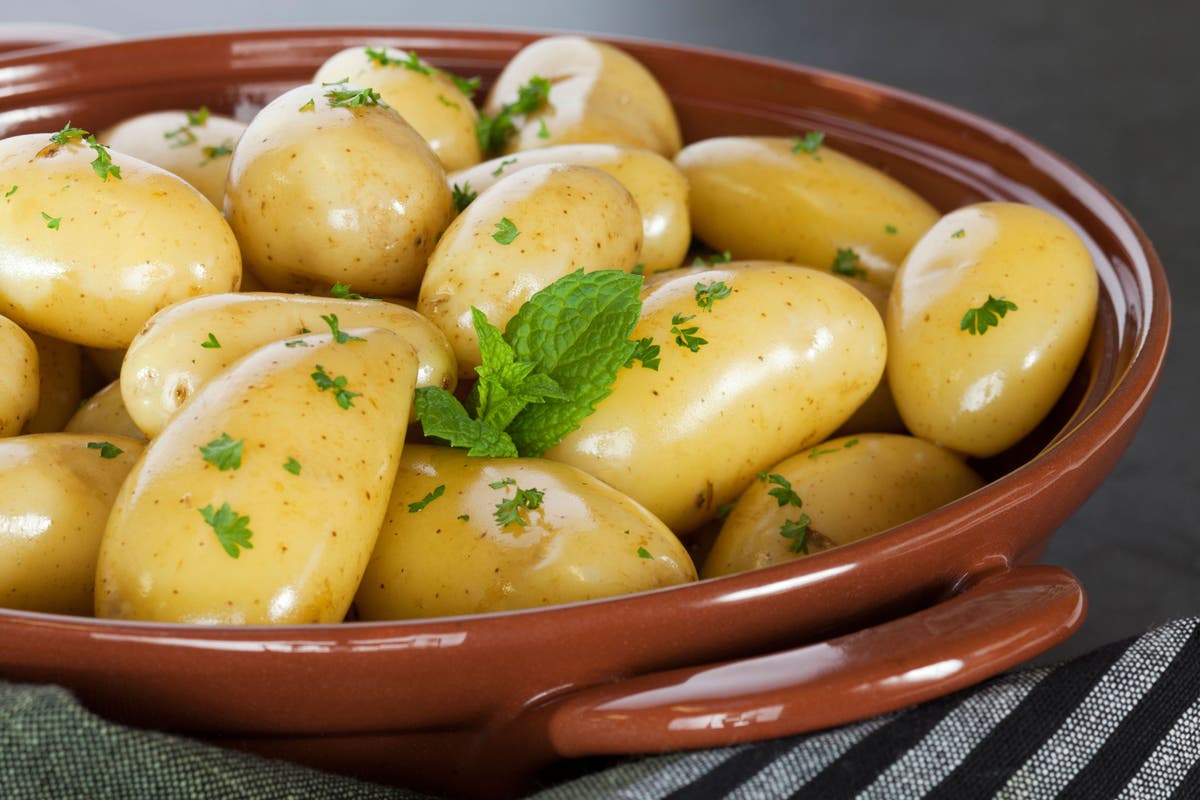[ad_1]

Potatoes are among the easiest veg to grow for newcomers – and the start of the year is the time to start thinking.
Even if you only have a small area, you can grow potatoes in a large container or even a dustbin, to give you delicious early croppers which taste far better then any shop-bought variety.
Where do you start?
Hardly anyone grows potatoes from seed these days. Most people buy seed potatoes (specially grown tubers) from garden centres in January and February. They look like little potatoes which during the colder months you’ll need to start off indoors.
What type of potatoes should I grow?
There are two categories – earlies or maincrops. Earlies, which we know as new potatoes, are ready for harvesting much sooner than maincrops – the fastest maturing varieties will be ready to lift by the end of June – and are a good bet if you are only going to be able to grow a few in a large pot or bin with drainage holes.
Second earlies are generally ready to harvest in July and August, while maincrops are in the ground a lot longer, harvesting from late August through to October, and produce larger spuds and often a greater harvest.
Chit the seed potatoes
Do this from late January onwards, by placing your seed potatoes on a tray or in open empty egg boxes on the windowsill, or another frost-free place with light, with the end with the most ‘eyes’ facing upwards to ‘chit’ them. Within a few of weeks, the eyes will begin to sprout, forming new shoots called ‘chits’. Label each variety you chit.
The green shoots should be 2-4cm long by mid-March to April when the weather is warm enough to plant them, as they don’t do well in cold, wet soil. If you’re growing earlies, rub off the weakest shoots, leaving around four per tuber.
Prepare the ground
Ideally, the previous autumn or winter you want to add plenty of organic matter to the area where you are going to plant your potatoes.
Planting know-how
Plant your seed potatoes in a sunny spot. Dig a narrow trench around 12cm deep, spacing the tubers 30cm apart (with the sprouts facing upwards) for earlies and 37cm apart for maincrops, in rows 60cm apart for earlies and 75cm apart for maincrops. Remember potatoes won’t tolerate frost, so don’t plant them until mid to late March, when the spring sun is warming the soil.
If the soil is dry, water the planting hole beforehand, but you won’t need to do this in wet weather. Once planted, leaves should emerge in around four weeks, which will need protection from any late frost.
Earthing up
While they are growing, plants will need ‘earthing up’, which means drawing soil up around the leaves to protect shoots from frost and ensure that the potatoes underneath the soil aren’t exposed to light at all, which will turn them green and poisonous. You’ll need to do this when the shoots are around 23cm tall.
Earth up with a rake up and around the stems, leaving just the tips of the plants showing. You’ll need to do this a few times while the stems are growing, until the mound is around 30cm high. If there’s danger of a harsh late frost, cover the rows with horticultural fleece.
If planting in large pots…
Add 10cm of peat-free compost to the pot and place three to five chitted potatoes a hand’s width apart, covering them with 10cm of compost and water in well. As the plants grow, instead of earthing up, just add more compost to the pot to protect the shoots. You will need to do this a few times.
Watering
In dry weather, make sure the plants are well watered. Maincrop potatoes may also need a nitrogen-rich fertiliser when they are growing well. Potatoes – particularly those in pots – will need watering regularly, every two to three days, which will help the developing potatoes swell.
Harvesting
Hopefully, earlies should have produced flowers and will be ready to harvest at the end of June. When the foliage turns yellow on maincrops which you are going to store later on in the season, cut it back and then wait for 10 days before digging up the potatoes, letting them dry for several hours before storing in a cool, frost-free place.
Use your garden fork cautiously when you dig them up, to avoid spearing any tubers. If you’ve grown potatoes in pots you may prefer using a hand fork to dig them out, or just upend the pot to get your harvest.
Which varieties should I choose?
Reliable types often have an RHS AGM (Award of Garden Merit), so look for the label when you buy the seed potatoes. For first earlies you may go for ‘Accent’, ‘Maris Bard’ or ‘Swift’; second earlies choices may include ‘Jazzy’, ‘Nadine’ and ‘Charlotte’; and good maincrop varieties include ‘Sarpo Mira’ and ‘Maris Piper’.
[ad_2]
Source link
